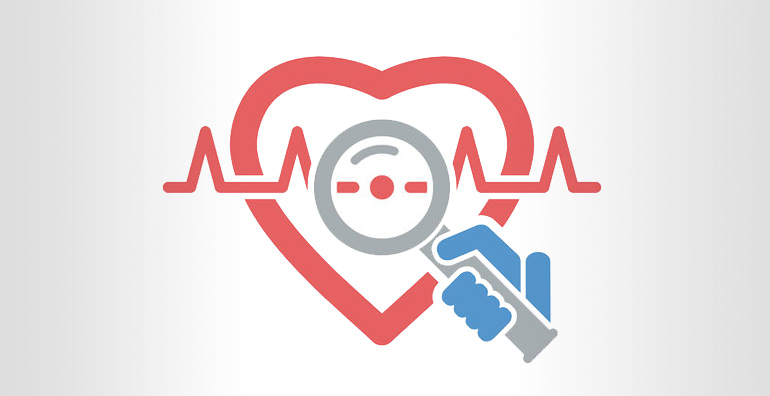
Heart problems: what habits need to be reset?


The chronic degenerative diseases growth
Cardiovascular diseases are the first cause of death in Western countries. In Italy, ischemic heart disease, cerebrovascular disease and other heart diseases together account for about 30% of all deaths.
The bad quality of the diet along with sedentariness contributes to the prevalence of all the chronic degenerative diseases that considerably affect the quality of life and constitute the main cause of deaths and disabilities.
Thanks to the advancement of medicine, life expectancy is increased, but it would be worthwhile to encourage all lifestyle changes to help and integrate the life-saving action of medicines.
How to prevent cardiovascular diseases ?
Prevention policies mainly focus on medical interventions, although it has been known for many years that lifestyle changes – principally focused on exercise and nutrition – can reduce significantly the cardiovascular risk with anti-atherosclerotic, anti-thrombotic, anti-ischemic, anti-arrhythmic effects and an important reduction in mortality and infarction incidence.
Dietary changes and physical activity, together with the improvement of body composition, make a sense of general well-being. On the other hand, pharmacological interventions, together with their “irresistible healing effect”, unfortunately almost have side effects that worsen the quality of life. In accordance with the World Health Organization it should tend to add life to years and not just years to life.
The best prevention would be the so-called primary that has to be done to avoid or reduce the risk of developing a disease. Once the disease has manifested, it is equally useful to change habits, eliminating negative ones, such as smoking and sedentary, and adopting a healthy and balanced diet.
Remember that excess weight, especially abdominal fat (waist circumference ≥102 cm in men and ≥ 88 cm in women), is an important cardiovascular risk factor that can and must be “correct”.
Diet and lifestyle according to AHA
The American Heart Association (AHA), for example, gives the following recommendations partially reproducing the DASH diet (Dietary Approaches to Stop Hypertension):
- Know your own calorific needs to set up nutritional habits for achieving and maintaining a proper weight;
- Practice physical activity regularly;
- Follow a varied diet including foods naturally rich in vitamins, minerals and antioxidants;
- consume abundant amounts of fresh or frozen vegetables and fruits without adding sauces or sugars;
- choose whole grains, naturally rich in fiber and nutrients;
- Consume poultry without the skin. If you eat red meat, choose lean cuts;
- Eat fish at least twice a week, especially the type rich in omega-3 (e.g. salmon, trout, herring and blue fish)
- Avoid trans fats, limit saturated (SFA), soft drinks and carbonated drinks;
- Limit salt, added and contained in foods, considering a daily limit of about 4 grams;
- moderate the intake of alcohol and avoid smoking also passive.
And what about the fats?
Over time there has been a change of vision of the role of fat in the guidelines for healthy diets. Clarified the linkage between diet and cardiovascular risk, it has shifted from the vision of the 60’s of fats seen as the “negative” macronutrient to avoid to the vision of the latest US and European guidelines that raise their contribution up to 35% of total daily calories. Instead, the type of fat is discriminated, indicating the reduction of SFA (saturated fats) under 10% by replacing them with mono (MUFA) and polyunsaturated (PUFA), with particular regard to Omega-3 (ALA, EPA and DHA)*.
The indication of SFA is due mainly to its action on blood-lifting LDL cholesterol (and partly also HDL) considered to be among the major cardiovascular risk factors. MUFAs and PUFAs, on the other hand, have a positive effect on reducing LDL cholesterol, generally called “bad”.
While there is a unique view that trans fats, result from industrial processes, are harmful to health and especially to the heart (4), this is not the case with SFAs. In particular, the recent published PURE study on Lancet (5) finds no correlation between populations that have higher fat consumption (including SFAs) and death for cardiovascular disease while highlights its negative role in correlating with high carbohydrate consumption, in particular with refined ones. These emerging data will be considered for further research and insights, also because it may be useful to evaluate the various types of SFAs present in the diets. They may have a different metabolic destiny according to their chemical nature (e.g. aliphatic chain length).
The Omega-3 family
This category of fat plays a key role in the human diet and in particular also cardiovascular functions. The molecular mechanisms underlying these properties are partially known and partly still a subject of research. It is well known that Omega-3 taken with foods once embedded in cell membranes gives it greater fluidity, provides biochemical precursors for important signal molecules and modulates cellular interactions, including the functions of trans membrane channels.
The consequence of Omega-3 for cardiovascular health are:
- lowering blood triglycerides;
- Reducing LDL cholesterol synthesis (de novo lipolysis);
- increasing fats consumption as an energy source (beta oxidation);
- Increasing in formation of phospholipids by reducing triglyceride levels by liver enzymes
- Improving blood pressure lowering vascular resistance through various mechanisms, as the largest production of nitric oxide.
Omega-3 food sources are found in the vegetable world in particular in the fruits and oilseeds (flaxseed, hemp, walnuts), in blue fish (sardines, mackerel, alike, etc.) and coldwater fish (salmon, herring, trout).
The Omega-3 intake can be evaluated provided that they are accompanied by dietary change and the assumption of healthy lifestyles. In fact, no pill can effectively replace the action of food and motor activity.
Integration should be done in a personalized way and preceded by a blood test that identifies the real needs of specific categories of fatty acids. The most complete choice is the examination of the fatty acids in the cell membrane because if it is done on mature red blood cells, the nutrition and metabolic status of the last 3-4 months is on us and not just the situation of a single day.
* SFA = saturated fatty acids;
MUFA = monounsaturated fatty acids
PUFA = polyunsaturated fatty acids
ALA = alpha linolenic acid
EPA = eicosapentaenoic acid
DHA = docosahexaenoic acid
Bibliography
(1) Report ISTAT. Anni 2003-2014 L’evoluzione della mortalità per causa: le prime 25 cause di morte. 4 maggio 2017.
(2) Ornish D, et al. Intensive Lifestyle Changes for Reversal of Coronary Heart Disease. JAMA. 1998;280(23):2001–2007. doi:10.1001/jama.280.23.2001
(3) Boden WE, et al. Physical Activity and Structured Exercise for Patients With Stable Ischemic Heart Disease. JAMA. 2013;309(2):143–144. doi:10.1001/jama.2012.128367
(4) Brouwer IA, et al. Trans fatty acids and cardiovascular health: research completed? European Journal of Clinical Nutrition. 2013. 67, 541–547
(5) Dehghan, M, et al. Associations of fats and carbohydrate intake with cardiovascular disease and mortality in 18 countries from five continents (PURE): a prospective cohort study. The Lancet. 2017. doi.org/10.1016/S0140-6736(17)32252-3
(6) Mozaffarian D. Omega-3 Fatty Acids and Cardiovascular Disease Effects on Risk Factors, Molecular Pathways, and Clinical Events. Journal of the American College of Cardiology. 2011. Vol. 58, No. 20
Nutritionist Dr. Francesco Bonucci
The diet tips, written in the article, are not intended to be a substitute for a personal nutrition plan and are to be adapted to specific cases.
Photo: 123RF Archivio Fotografico | ©andreykuzmin , 20581212, 2017-09-21 | ©myvector, 26132113, 2017-09-21
- On 22 September 2017




